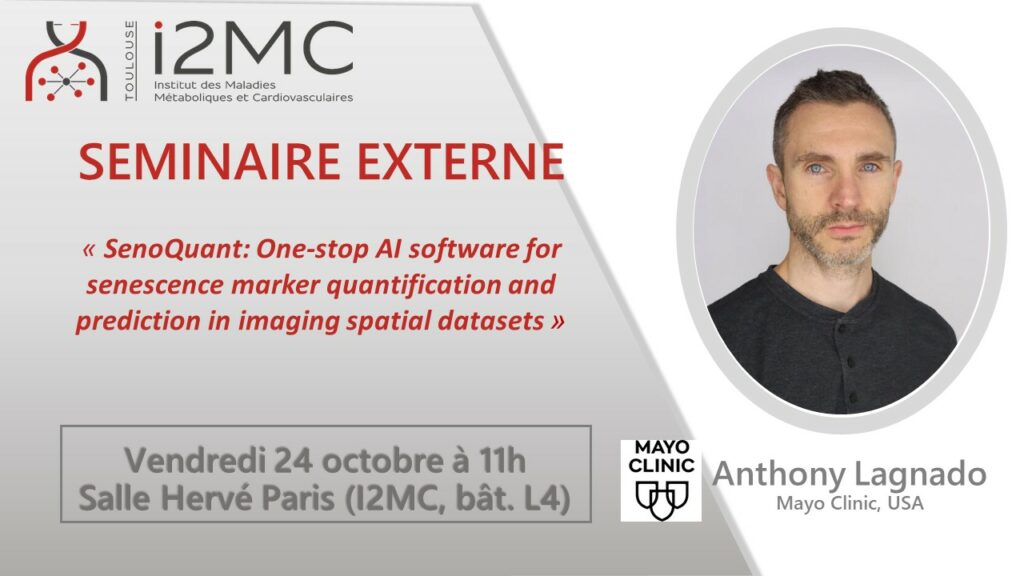Vendredi 24 Octobre 11h Salle H. Paris
SenoQuant: One-stop AI software for senescence marker quantification and prediction in imaging spatial datasets

Anthony Lagnado a fait un Master à Montpellier au cours duquel il a travaillé chez Jean Marc Lemaitre sur iPSC et cellules senescences. Puis il a fait sa thèse à Newcastle Upon Tyne dans le lab de Joao Passos (biologie fondamentale , sénescence et dna damage). Il a ensuite fait un post doc a la Mayo Clinic, où il est actuellement staff scientist depuis 2 ans, travaillant sur cellular senescence, intelligence artificielle pour la détection et caractérisation de cellules sénescentes sur tissu.
Abstract relatif à sa présentation:
Senescent cells accumulate with age and contribute to age-related tissue dysfunction. However, their identification within tissues is challenging due to their low abundance, complex phenotype, and lack of specific markers. A major challenge lies in the complex spatial distribution and morphology of senescence-associated features, which can localize to distinct subcellular compartments. These include nuclear DNA damage foci, cytosolic protein accumulation, and alterations in perinuclear structures, amongst others, each requiring tailored detection strategies. To overcome these challenges, we developed SenoQuant, a versatile software designed for comprehensive, accurate, and unbiased spatial quantification and prediction of senescence markers across diverse tissue contexts. Utilizing pre-trained AI models, SenoQuant enables precise nuclear segmentation and detection of senescence markers across both low- and high-plex imaging modalities, applicable to cultured cells and tissue sections from mice and humans. The platform also allows integration of custom AI models; for example, we developed SenCeption, a proof-of-concept model that predicts single-cell p21 status from DAPI-stained nuclei in human skin. Available as a free Napari plugin, SenoQuant is widely accessible to researchers. By providing a unified approach to senescence analysis and prediction, SenoQuant opens new opportunities for exploring the complex biology of senescence and its impacts on aging and disease.

